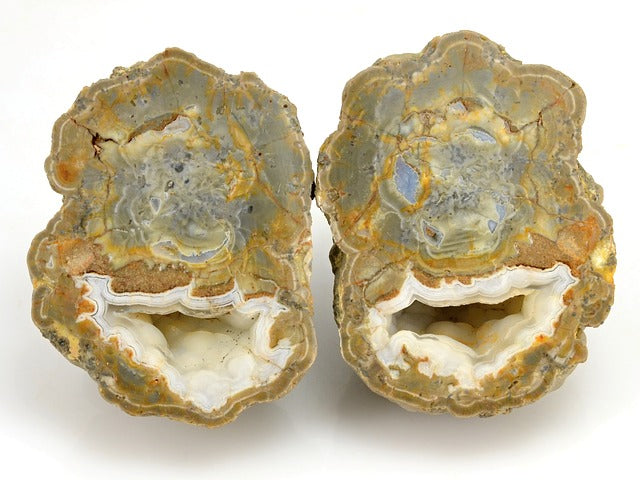About Thundereggs

Thundereggs: Oregon’s State Rock—and One of Earth’s Weirdest Geologic Surprises
Thundereggs are more than cool-looking rocks—they’re a geologic phenomenon. Scientifically known as lithophysae, thundereggs only form under very specific volcanic conditions, and Oregon just happens to be one of the best places in the world to find them.
These spherical nodules form inside high-silica lava flows—particularly in a volcanic glass called perlite, which is chemically similar to rhyolite and a close cousin to obsidian. You’ll often find them in the John Day Formation, especially around the famous Priday Ranch near Madras, Oregon.
Not Just a Bubble: A Million-Year Process
Most people assume the outer “egg” and the agate or jasper inside formed at the same time. In reality, the shell—the lithophysa—formed first, as a gas cavity in the lava. Then, sometimes millions of years later, mineral-rich groundwater seeped in and began to fill those voids with chalcedony, agate, jasper, quartz, or opal.
That means each thunderegg holds not just a stunning interior but a timeline in stone, showing you both the violent, explosive formation of the host lava and the quiet, patient mineral deposition that followed—sometimes across geologic epochs.
No two are alike. Their outer shapes reflect internal pressures, lava chemistry, and crystal growth. Their interiors capture the memory of mineral-laden waters, seasonal fluctuations, and even tiny trapped fossils or enhydro water bubbles in rare cases.
💎 Shop all our Thundereggs and hold a piece of Oregon’s volcanic past in your hands.




